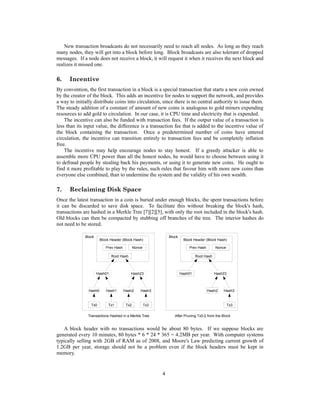CRYPTOCURRENCY
Ethereum: Pruning Branches in the Merkle Tree
Here is a rewritten version of the article:
Ethereum: Merkle Tree Branch Pruning

When building blockchain networks on top of Ethereum, developers often want to optimize storage and network performance. One common technique used to achieve this goal is to prune the branches of the Merkle tree.
In traditional Bitcoin, a Merkle tree is a complex data structure that allows for efficient validation and verification of transactions on the network. However, as the size of the blockchain increases, so does the number of leaves (or transactions) in the Merkle tree. This can lead to storage inefficiencies and slower transaction processing times.
The Bitcoin document that Satoshi Nakamoto published in 2008 highlights one solution to pruning branches in the Merkle tree: by storing only the hash values of their children, not the actual transactions themselves. This approach allows developers to reduce the amount of data that needs to be stored and transmitted across the network.
In Ethereum, this technique is known as “leaf pruning.” By using leaf-level hashing (i.e., storing only the hashes of internal nodes), Ethereum developers can remove redundant data and save storage space. However, this also means that each transaction will have fewer children in the Merkle tree, which can affect the security and efficiency of the network.
For example, consider a simple example of two transactions: “T1” and “T2.” In the Merkle tree, both T1 and T2 will be represented as leaves (i.e., hashes). However, since T1 is only a child of T2, the Merkle tree for “T1” will not include its own hash value. This can make it difficult to verify transactions on the Ethereum network.
In practice, leaf pruning in Ethereum has been implemented through a variety of means, including the use of specialized hardware and software libraries. However, the technique still requires careful consideration when designing large-scale blockchain applications.
As developers continue to build and scale their Ethereum-based projects, the importance of efficient data storage and management will only grow. By understanding how to prune branches in the Merkle tree, we can optimize the performance of our network, reduce costs, and improve the overall user experience.
